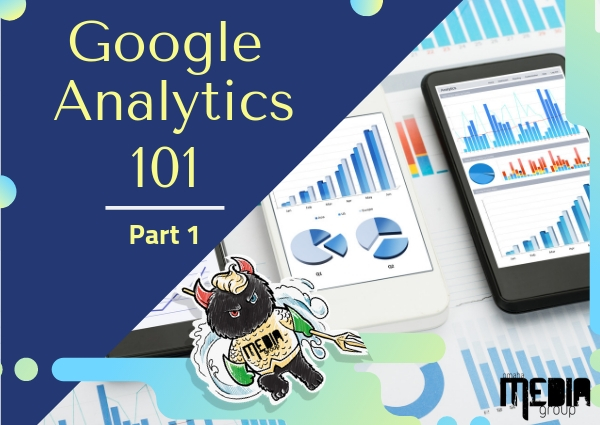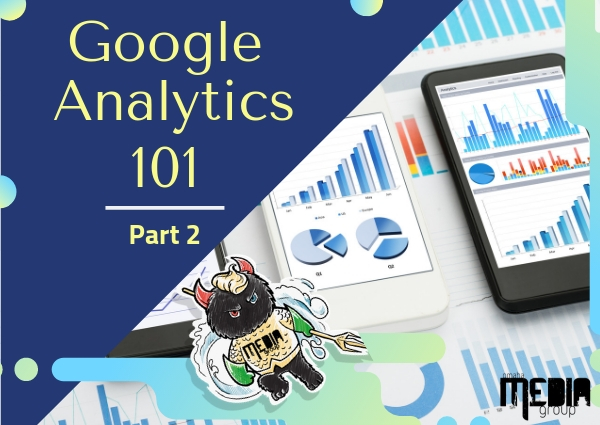 https://www.omahamediagroup.com/images/uploads/monster_gallery/Omaha-Media-Group-Black.jpg
admin
https://www.omahamediagroup.com/images/uploads/monster_gallery/Omaha-Media-Group-Black.jpg
admin
PART 1: Google Analytics 101

A return of investment is one of the most critical components for a website design and development and digital marketing efforts. A client or business wants to know who is viewing their website, when and why. While Google Analytics might not be able to break down the why without goal metrics in place, the other common questions can be answered easily.
Now, you have logged into the backend of your website, what does all of this even mean?
The importance
The most important aspect for businesses is that Google Analytics provides the insights needed for their board meetings, executive meetings, internal marketing meetings and personal insights and knowledge. The website analytics provide a detailed report based on the website’s audience, average page session, bounce rate, year to year pageviews and sessions, new and returning users and even more!
Dashboard
The best part about being a full service digital marketing agency is that any custom website clients have designed and developed with MMG has Google Analytics dashboard on the website!
Google Analytics allows for a business to get into the nitty gritty and set up goals, but our dashboard gives you the basics of your website! How do you reach this dashboard? First, login to your website. Now, if it has been a while since you have logged into your website’s account, our team has disabled Editor accounts.
If it hasn’t been that long, use the custom website login we created for you and your team members! Once you have logged into the account, this is what the dashboard will look like!
What the heck does any of this mean? The numbers, charts and pageviews? This can seem very intimidating, but that is what we are here for.
First thing first, it will show all active users on the website currently. These are searchers who are navigating through the website. The sources next to the users show the technology they are using.
The middle section is where it starts to get overwhelming. It shows today, yesterday and a 30 day report of the following notions:
Sessions
Pageviews
Pages/Sessions
Average Session
Sessions
Google Analytics states that page session is, “a group of user interactions with your website that take place within a given time frame. For example, a single session can contain multiple page views, events, social interactions and ecommerce transaction.”
A searcher clicks on a landing page, moves to another page, clicks on a blog, clicks on a service page and finally the goal comes to life. . The moment between the searcher clicking on different pages and interacting with the page to hit the “tiggers” set up in Google Analytics is a session. The biggest notion to remember is that the searcher has 30 minutes, or the time that was set, before the session ends.
A searcher can interact with a website multiple times over a month basis and different sessions can occur each time the searcher interacts with the website.
Pageviews
Our full service digital marketing agency tells all clients that a pageview is a page that is being clicked on. It is counting the amount of pages that were clicked on and refreshed.
Now, this is important, Yoast states that, “The metric itself says nothing about how many visitors saw that page or how many times the page was viewed per session. It is just the total number of pageviews per page.” This means that one visitor can be responsible for four pageviews and each page can be viewed for an entire session.
A great transition for the next thing on the Analytics list- pages/sessions. This is the amount of pages searchers are navigating through your website in a single session.
Average/ Sessions
The average session is the total duration of sessions (in seconds) divided by the number of sessions.
There are two different ways that Google Analytics calculates average/ sessions on a website. Engagement with the site or no engagement.
“No engagement hits” is a goal or action being taken that is triggered in Google Analytics.
Bounce rate
The bounce rate is a single-page session that only triggers a single request. Aka, if searchers are clicking on a landing page, blog or service page and immediately clicking the back button this is a bounce rate. Our digital marketers at our full service marketing agency wants clients to understand that a high bounce rate is not always bad.
Visitors
You will see this pie chart that shows new and returning visitors. If you hover over the graphic it shows the percentages of new and returning visitors. In this chart, there are 84% new visitors and 15.5% returning visitors!
What is the difference between new and returning visitors? A new user in Google Analytics is classified as a searcher who does not have a cookie on their device. A returning visitor is one that has a cookie on their device. The new user starts a new session and user type. The returning visitor starts a new session and the metric is set back at 0 for this new session.
Top pages
This is probably the easiest part of the entire dashboard next to devices, top pages. These are the top pages for the website. These are the pages that are being viewed and visited the most. The nice part about this is the amount of views for these top pages. (If you go into Google Analytics itself, it gives a breakdown of all of the top pages on your website.)
As a full service digital marketing agency, we have mentioned several times in this blog “inside Google Analytics itself.” This is a small, but comprehensive overview that we give clients for their immediate access. Scroll down, click the button that says “view more in Google Analytics” and get lost in the numbers.
Hire the team to help you with your website, app, or other marketing needs.
We have a team of digital marketers who can help plan and bring to life all your digital marketing strategies. They can help with social media marketing, email marketing, and digital advertising!
CONTACT US




Comments